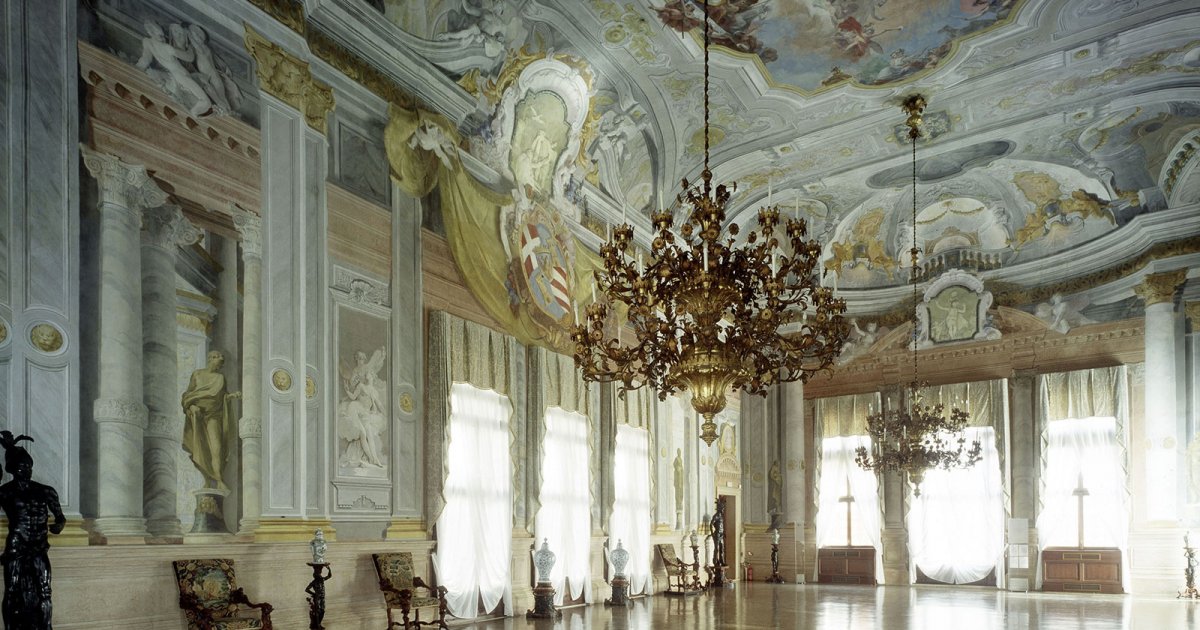CÀ REZZONICO, First Floor
 Language: English / USA
Language: English / USA
And in fact your tour starts precisely from the ballroom, the largest room on the first floor, at the top of the majestic staircase. Have you ever seen a home with such an entrance? Imagine what types of people these Rezzonico were, to amaze their guests with such a spectacle! And look at the decorations! Notice the fake architectures painted on the walls and ceiling that give you the idea of an even larger space? Now look down: this type of floor made of marble and stone fragments bound by lime and then polished is in fact called "terrazzo alla veneziana", or "terrazzo" in English, and is still used today. The fine furnishings and sculptures that you see along the walls are by Andrea Brustolon, the most imaginative creator of 18th century Venetian furniture; he's famous for his dark page statues. If you look on the greater wall, you'll see the Rezzonico family's coat of arms surrounded by paintings and golden fabrics.
From the ballroom go through to the Nuptial Allegory Room, named for the brilliant fresco by Giambattista Tiepolo on the ceiling; this room even has a small chapel for any compelling religious needs. Next you'll go on to the Pastel Room, where you can admire some works by Rosalba Carriera, a refined Venetian portrait painter who became famous throughout Europe. But you still haven't seen the Tapestry Room with its beautiful furniture and a cycle of Flemish tapestries, and last but not least, the salon with another Tiepolo fresco and an amazing view of the Grand Canal.
It's time to cross the "portego" that connects the building's façade with the back: this architectural element is often found in Venetian buildings and villas. Here you'll immediately enter the Tiepolo Room. The author of the painting on the ceiling is Giambattista, the most imaginative and solar of the European painters of the 1700s, while the canvases on the walls are by his sons Giandomenico and Lorenzo. Once you have had your fill of Tiepolo wonders, go to the library and another room full of paintings, sculptures, and Murano glass chandeliers.
FUN FACT: you should also know that Rosalba Carriera was additionally an extraordinary miniaturist, and her success found its roots... in snuff! In fact, she attained notoriety by painting tiny figures of ladies on snuff tobacco cases, and the symbol then became her trademark.



